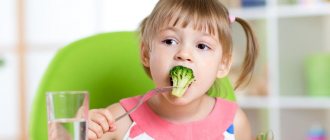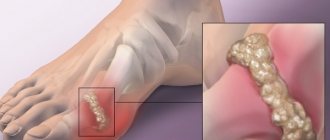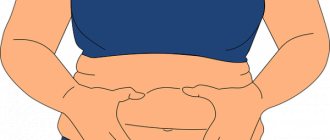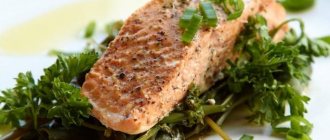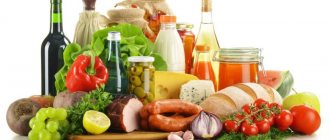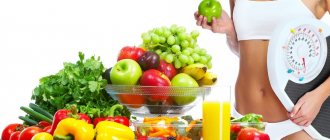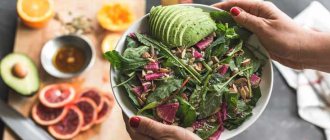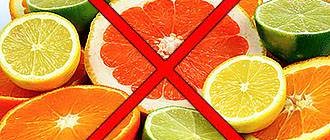For people with chronic and acute gastrointestinal diseases, diet number 1 is indicated for stomach ulcers. Such a diet has a normal energy value with a harmonious combination of nutrients. The menu excludes products that cause thermal or chemical irritation of the mucous membrane, as well as components related to strong secretion stimulants.
Features of diet number 1 for ulcers
The system in question was developed by the famous USSR nutritionist Mikhail Pevzner. The main difference is the increased effect, regardless of the stage of the disease. The diet includes moderate consumption of a variety of foods. The menu is dominated by components that do not increase gastric secretion. With long-term maintenance of this diet, the general condition of the body is normalized, and the healing of wounds in the gastrointestinal mucosa is accelerated.
Among other features of diet number 1 for stomach and duodenal ulcers:
- Products are ground, steamed or boiled. Meat and fish are consumed in small pieces, which minimizes stomach irritation.
- All food is served unsalted, helping to remove excess fluid.
- Shortly before bedtime, it is recommended to drink a glass of milk.
- Extremely hot or cold foods are excluded from the diet.
general description
Diet 1 for stomach ulcers is quite varied. The diet is formed so that parts of the gastrointestinal tract deformed as a result of the disease absorb an insignificant proportion of nutritional components. This menu makes it possible to quickly get rid of the feeling of hunger that provokes pain.
Approximate composition of the treatment table (in grams per day):
- proteins – 90–100, of which 65% are of animal origin;
- fats – 75–85, of which vegetable fats – at least 20%;
- carbohydrates – 350–400;
- salt - no more than 8.
A balanced diet will allow you to get up to 3 thousand calories daily, which is the norm. Do not forget that you need to drink at least 1.5 liters of liquid.
Diet 1 A for stomach ulcers, duodenal ulcers and chronic gastritis
This system is relevant for exacerbation of gastrointestinal diseases. It is advisable to follow the diet for at least 10 days. The main task of the table is to actively restore the gastric mucosa while simultaneously reducing the reflex excitability of the digestive tract.
In the Pevzner diet for peptic ulcer disease (1 A), the diet is adjusted in favor of reducing protein foods and fats. Their norm is taken to a minimum, carbohydrates are also removed from the menu, helping to reduce the load on the gastrointestinal tract. Fatty meat broths and coarse vegetables are removed from consumption. At the same time, there is no need to significantly limit salt, which has a positive effect on the taste appeal of food.
The specification of the nutrition program in question is bed rest, and therefore all meals are served in the form of liquids or cereals. First, the products are boiled, pureed and brought to the desired consistency by adding water or milk. Proper adherence to the diet contributes to the rapid relief of inflammation, a sufficient amount of protein additionally promotes the regeneration process, energy saturation is leveled by carbohydrates, preventing a critical load on the digestive organs. The most valuable component in the indicated diet number for stomach ulcers is milk. With its help, wounds heal. If the body tolerates the product well, the consumption rate per day reaches 4–5 glasses.
Medical diets No. 1-No. 15
For many diseases, diet is one of the main methods of treatment, and for some, the only one, for example, obesity and mild diabetes. In clinical nutrition, it is important not only to choose the right products, but also to prepare them correctly. The temperature of the food, the time and frequency of its consumption are also important. Dietary disorders can lead to exacerbation of the disease. For example, in diabetes mellitus this can cause increased blood sugar, increased thirst, dry mouth; in hypertensive patients, eating salty foods can lead to increased blood pressure.
In medical and sanatorium institutions, a numbered system of diets is used, many of which exist in several versions. After the exacerbation of the disease has passed, the patient must continue to follow the general principles of the diet. First of all, this applies to foods that should be excluded from the diet, but other cooking methods can be used. Any, including medical diets No. 1-No. 15, completely exclude alcohol. If one person has a combination of two diseases that require special nutrition, he must follow the principles of both diets. Diet No. 1, 1a, 1b – stomach and duodenal ulcers; Diet No. 2 – chronic and acute gastritis, colitis, enteritis, chronic enterocolitis; Diet No. 3 – constipation; Diet No. 4, 4a, 4b, 4c – intestinal diseases with diarrhea; Diet No. 5, 5a – diseases of the biliary tract and liver; Diet No. 6 – urolithiasis, gout; Diet No. 7, 7a, 7b – chronic and acute nephritis; Diet No. 8 – obesity; Diet No. 9 – diabetes mellitus; Diet No. 10 – diseases of the cardiovascular system; Diet No. 11 – tuberculosis; Diet No. 12 – diseases of the nervous system; Diet No. 13 – acute infectious diseases; Diet No. 14 – kidney disease with the passage of oxalate stones; Diet No. 15 – diseases that do not require special diets. Table No. 1 is indicated for gastritis with high acidity and for ulcers of the duodenum and stomach for six months to a year after an exacerbation. Recommended: pureed soups, boiled pureed vegetables, pureed porridge, boiled lean fish and meat, steamed fish and meat cutlets, boiled skinless chicken, milk, vegetable and butter, cream, non-acidic sour cream and curdled milk, soft-boiled eggs, stale white bread , sweet fruits and berries, fruit and vegetable juices. Food should be taken four to five times a day, warm. Table No. 1a is indicated during the period of exacerbation of chronic gastritis with high acidity, with exacerbation of the ulcer. Recommended: slimy soups, milk, liquid porridges, soft-boiled eggs, soufflé from lean fish or meat, olive and butter, berry jelly, cream, fruit juices, tea, rosehip decoction. Salt should be limited, and liquids should be drunk no more than one and a half liters per day. Food should be taken warm every two to three hours. Table No. 1b is indicated for patients when chronic gastritis and peptic ulcers subside. Recommended: in addition to the previously listed products, you can eat steamed fish and meat dishes, pureed milk soups with vegetables, pureed milk porridge, and wheat crackers. You need to eat six times a day and limit your salt intake. Table No. 2 is indicated for chronic colitis and chronic gastritis with low acidity. Recommended: vegetable and cereal soups in fish, mushroom and meat broths, boiled chicken, lean meat, cutlets, lean boiled fish, lean ham, lean lightly salted herring, butter, milk and fermented milk products, mild cheese, porridge, soft-boiled eggs, stale white bread, fruits, vegetables, vegetable and fruit juices, coffee, tea, cocoa, marmalade sugar. You need to eat it five times a day, preferably in puree form. Table No. 3 is indicated for atonic constipation. You can eat foods containing large amounts of plant fiber, figs, prunes, compotes, fruit and vegetable juices, pureed carrots, beets, dried fruits, kefir, cream, milk, curdled milk, black bread, pearl barley and buckwheat porridge, honey, fried meat and fish, sugar, vegetable and butter. It is recommended to drink plenty of fluids, including sparkling mineral water. You should not consume cocoa, strong tea, jelly, or slimy soups. If constipation is static, you need to limit foods rich in plant fiber. Table No. 4 is indicated for exacerbations of intestinal diseases. You can eat cocoa, strong coffee and tea, stale crackers from white bread, soft-boiled eggs, cottage cheese, semolina and rice porridge with water, boiled meat and fish, three-day kefir, jelly, blueberry and black currant decoction. Salt should be limited. Table No. 4a is indicated for colitis. You need to eat the same as in the fourth diet, but you need to limit carbohydrate-rich foods and increase the protein content. Table No. 4b is indicated for patients with chronic colitis when the disease subsides. Recommended: stale white bread, broth with meatballs, cereal soups with meat or fish broth, pureed cereals, steamed and boiled vegetables, mild cheese, kefir, sour cream, dry biscuits, soft cookies, jelly and compotes of unsweetened fruits and berries , coffee with milk, tea, butter. You need to eat warm food four to six times a day. Table No. 4c is indicated for chronic and acute intestinal diseases during the recovery period. This diet is prescribed to provide adequate nutrition in case of intestinal dysfunction in order to restore the function of other digestive organs. The diet is physiologically complete with limited salt intake and a slight increase in the amount of protein foods. It excludes foods that enhance the processes of putrefaction and fermentation in the intestines, activates its secretion, as well as the secretion of the pancreas and stomach. You need to prepare dishes by steaming, crushed, or baking or boiling. You need to eat five times a day. Table No. 5 is indicated for people with diseases of the biliary tract, gallbladder and liver outside the acute stage. You should eat milk and fruit soups without meat, cereal soups with vegetable broth, boiled fish, poultry and lean meats, cottage cheese, kefir, milk, flour dishes and cereals, white and black stale bread, sweet berries and fruits, herbs and vegetables. , honey, jam, sugar, fruit and vegetable juices, weak tea with milk. You should limit your intake of fats and salt. You need to eat five times a day. You cannot consume alcoholic beverages, brains, liver, legumes, lard, spinach, mushrooms, onions, sorrel, fatty meat and fish, baked goods, smoked, spicy and fatty foods, vinegar, spices, canned food, cocoa, ice cream, creams, chocolate, drinks with gas. Table No. 5a is recommended for chronic pancreatitis. The diet is the same as for diet No. 5, but you should eat more protein-containing foods and limit foods containing fats and carbohydrates. All food should be steamed, chopped and pureed. Table No. 6 is indicated for kidney stones and gout. It is recommended to consume black and white bread, milk and dairy products, honey, sugar, milk and vegetable soups, cereal products, sweet fruits, fruit juices, jam, cucumbers, lettuce, carrots, bay leaves, vinegar, lemon, lean fish and meat, eggs. In this case, you need to drink at least two to three liters of liquid. You cannot eat meat soups, kidneys, liver, brains, smoked and fried meat, fish soup, fried fish, herring, lard, sardines, sprats, mushrooms, pates, spinach, sorrel, legumes, cocoa, coffee, alcohol and strong tea. Table No. 7 is indicated for people with chronic kidney disease in the absence of renal failure. You should eat vegetarian soups, lean poultry, meat, fish, gray and white bread with bran, pasta, cereals, flour dishes, milk and dairy products, cottage cheese, vegetables, herbs, fruits, berries, jam, honey, sugar. You should limit your consumption of sour cream and cream. Meals should be six times a day. You cannot drink carbonated drinks, eat creams and cakes, legumes, mushrooms, fish and meat broths, canned food, smoked meats, and pickles. Table No. 7a is indicated for acute and chronic nephritis in the acute stage. You need to eat boiled vegetables, fruits, flour and cereal products, white bread without salt, tea with milk, butter, sugar. Meals should be fractional, salt should be completely eliminated. If uremia develops, you need to reduce your daily protein intake to twenty grams per day, especially vegetable proteins. Table No. 7b is indicated during recovery from acute kidney inflammation. This diet is transitional from No. 7a to No. 7. You can eat white salt-free bread, boiled lean fish and meat, and reduce your salt intake. Table No. 8 is indicated for obesity. This diet is characterized by a decrease in the energy value of the diet due to carbohydrates, partly fats, while the protein content should be normal. In addition, salt, appetite-stimulating foods and free fluids should be consumed in limited quantities. You should consume one hundred grams of protein, eighty grams of fat, one hundred and fifty grams of carbohydrates per day. Recommended products include rye, protein-bran and protein-wheat bread, vegetable soups with cereals, borscht, cabbage soup, beetroot soup, okroshka, lean fish, poultry, stewed, baked or boiled meat, jelly, beef sausages, seafood, milk , cheese, cottage cheese, fermented milk products. Fruits and vegetables can be eaten in any form. Products made from butter dough and high-grade flour, pasta, legumes, cereal and potato soups, fatty fish, poultry and meat, smoked meats, sausages, canned food, sweet berries and fruits, legumes, fatty cheese, cottage cheese, cream, pasta should be excluded from the diet. products, oatmeal and semolina, spicy and fatty snacks, mayonnaise, sauces, spices and herbs. Table No. 9 is indicated for mild to moderate diabetes. The energy value of the diet should be reduced by animal fats and easily digestible carbohydrates, and sweets should be excluded. The daily diet should contain about one hundred grams of protein, eighty grams of fat, and three hundred grams of carbohydrates. You can eat protein-bran, wheat, rye bread, vegetable soups, low-fat fish and meat broths, fish, poultry and lean meats, milk, cheese, low-fat cottage cheese, fermented milk products, cereals, vegetables, potatoes, sweet and sour berries and fruits. You should not eat fatty and strong broths, rich flour products, salted fish, sausages, semolina, rice, pasta, pickled and salted vegetables, raisins, grapes, jam, sugar, candy, lemonade, and sweet juices. Table No. 10 is indicated for diseases of the cardiovascular system. You should slightly reduce the energy value due to carbohydrates and fats, limit the consumption of salt and foods that stimulate the cardiovascular system. You should consume ninety grams of protein per day, a little more than half of which is animal, seventy grams of fat, four hundred grams of carbohydrates. You should eat stale bread, biscuits, soft cookies, vegetarian soups, milk, cottage cheese, fermented milk products, poultry, fish and lean meats, cereals and pasta dishes, baked and boiled vegetables, ripe fruits, jam, honey. You need to exclude from your diet products made from butter dough, fresh bread, mushroom, fish and meat broths, legume soups, sausages, smoked meats, kidneys, fatty and salty cheeses, salted fish, legumes, pickled, pickled and salted vegetables, fruits containing coarse fiber, cocoa, strong coffee, tea, chocolate. You can read more about this diet here Table No. 11 is indicated for tuberculosis of the bones, lungs, joints, lymph nodes during the period of mild exacerbation or recovery, in the postoperative period, after injuries, and with exhaustion after infectious diseases. The diet has a high energy value with a high content of proteins, minerals and vitamins. Every day you should consume one hundred twenty grams of protein, one hundred grams of fat, four hundred grams of carbohydrates. You can eat almost all dishes, except for very fatty poultry and meat, culinary, beef and lamb fats, pastries and cakes with a lot of cream. Table No. 12 is indicated for people with functional diseases of the nervous system. You can eat many foods with the exception of strong soups, spicy seasonings, smoked foods, fried and fatty foods, strong coffee, tea, and alcohol. You need to slightly limit salt and meat. It is advisable to consume tongue, liver, legumes, and dairy products more often. Table No. 13 is recommended for people with acute infectious diseases. The energy value of this diet is reduced mainly by carbohydrates and fats, while it is rich in vitamins. You should consume eighty grams of protein, sixty grams of fat, three hundred grams of carbohydrates per day. The diet includes dried wheat bread, lean fish, poultry and meat, low-fat meat and fish broths, mucous cereal decoctions, vegetable soups, cottage cheese, fermented milk drinks, beets, carrots, potatoes, tomatoes, cauliflower, grated buckwheat, semolina and rice. porridge, ripe berries and fruits, marmalade, jam, preserves, honey, sugar, rose hip decoction. Fresh bread, baked flour products, fatty fish, poultry, meat, fatty broths, smoked meats, sausage, canned food, salted fish, cheeses, full-fat sour cream, cream, whole milk, pasta, barley and pearl barley, millet, onions should be excluded from the diet. , garlic, radish, radish, white cabbage, legumes, cucumbers, cocoa, cakes, chocolate, high fiber fruits. Table No. 14 is indicated for urolithiasis. It represents a complete diet with a limit on calcium-rich and alkalizing foods. per day you can consume ninety grams of protein, one hundred grams of fat, four hundred grams of carbohydrates. You can eat bread and flour products, broths and soups, fish and meat, cereals, pumpkin, green peas, sour berries and apples, mushrooms, honey, sugar, and confectionery. Fruit, vegetable and milk soups, salted fish, smoked meats, dairy products, vegetables other than those allowed, potatoes, vegetable and berry juices, cooking and meat fats should be excluded. Table No. 15 is indicated for diseases in which there is no need for therapeutic diets. This diet is physiologically complete, while spicy and difficult to digest foods are excluded. You should consume ninety grams of protein, one hundred grams of fat and four hundred grams of carbohydrates per day. You can eat almost all foods, except fatty poultry and meat, mustard, pepper and refractory fats of animal origin.
Power mode 1 B
This diet table for stomach ulcers is prescribed to stabilize the condition after an exacerbation or surgery. Experts recommend sticking to the diet for a long period in order to exclude possible relapses of the disease and speed up the recovery process by adhering to semi-bed rest.
Compared to version 1 A, this option puts more strain on the stomach. The menu includes more fats and proteins of various origins, while the number of carbohydrates should be maintained at the lower acceptable limit. Dairy products, fish and meat are preferred in the diet - only steamed in small quantities. It is better to eat vegetables and fruits from baby food.
Grocery list
The daily diet for table No. 1 contains the following ratio of components:
- Proteins – 100 g;
- Carbohydrates – 400 g;
- Fats – 100 g.
The calorie content of a man's one-day menu can be increased to three thousand kilocalories, for women and children - up to two thousand eight hundred kilocalories per day. Salt intake is no more than twelve grams per day, drinking - one and a half liters.
You can include the following products in your daily diet for gastritis, ulcers and pancreatitis:
- Dried bread;
- Baked pies, baked goods without baking;
- Puree soups prepared from a decoction of vegetables (possibly with the addition of heavily boiled cereals or pasta);
- Veal, lean beef, turkey, chicken fillet, boiled or steamed;
- Lean fish, baked, steamed;
- Vegetable, buckwheat, rice side dishes;
- Porridge without milk with a minimum content of salt and sugar;
- All milk products, preferably low-fat, except cheese (rarely low-fat);
- Chicken eggs, omelettes;
- Snacks in the form of salads from boiled vegetables, beef liver pate, etc.;
- Sweet dishes made with fruit sugar;
- Drinks (hot chocolate, coffee drink, homemade juices, infusions).
The diet prohibits the use of the following items in the menu for gastritis, ulcers, pancreatitis:
- Strong tea, strong coffee drink;
- Carbonated drinks;
- Alcohol;
- Concentrated decoctions of fish and meat products;
- Millet, pearl barley, corn grits;
- Fresh bread and pastries;
- Vegetables that require long digestion;
- Dairy products with a high percentage of fat;
- Mushroom dishes.
Do's and don'ts for stomach ulcers: diet table table 1
Allowed and prohibited dishes and products are presented in the table:
| Can | Forbidden | Limited |
| Boiled or steamed lean meat | Rich fish and meat broths | Salt, seasonings, hard vegetables |
| Fish cooked in the oven or pressure cooker | Mushrooms | Coffee, black tea, sugar |
| Vegetable and fruit cream soups | Baking, black fresh bread | Ice cream |
| Unlimited – milk and milk products | Canned food and semi-finished products | Potato |
| Porridges, souffles, mousses, puddings, jelly | Alcohol, chocolate | Legumes |
Excluded foods and dishes of the diet table No. 1
Foods that cause pain, stimulate secretion, or irritate the walls of the gastrointestinal tract should be excluded from the diet. Namely: pickles, smoked foods, canned food, marinades, seasonings, sauces, carbonated drinks (including kvass). Also exclude strong tea and coffee, strong meat and fish broths, fried and stewed dishes, mushrooms, fresh bread, rye bread, butter dough, sour dairy products, sharp cheeses, coarse cereals (millet, corn, barley and pearl barley), sorrel , onions, cucumbers, tomatoes, legumes, white cabbage, spinach, turnips, radishes, radishes, sour fruits and berries.
Sample menu for the day and week
What can you eat if you have a stomach ulcer (diet number 1) per day:
- Breakfast – semolina pudding, soft-boiled egg, cottage cheese, green tea.
- Lunch – mashed potato soup, vegetable puree, chicken cutlet, berry jelly.
- Dinner – grated rice, milk, apple pudding.
Kefir, cottage cheese, and fruit purees are suitable as snacks before main meals.
The approximate diet number 1 of the peptic ulcer diet for a week is shown in the table.
| Breakfast | Snacks | Lunches | Afternoons | Dinners |
| Pumpkin, oatmeal, rice and other slimy porridges. Steam omelette, green tea, milk soufflé. | Cottage cheese casserole, apple in the oven. Semolina porridge, dumplings with berries, jelly. | Mashed soups made from lean meat or fish. Chicken broth, beef meatballs, fish soufflé, compotes. | Yogurt, kefir. Fruit purees. Buckwheat milk porridge. | Vermicelli, buckwheat with water or milk. Oatmeal, dietary meat, fish, jelly, weak tea. |
Before going to bed, you can additionally drink a glass of milk or berry jelly. The remaining components are combined according to your own preference, following the recommendations given. Additionally - at least 1.5 liters of purified water.
Diet 1a according to Pevzner: menu
This nutrition is necessary during an exacerbation period. For example, in peptic ulcers and gastritis with high acidity, this period usually occurs in autumn and spring.
Table 1a involves reducing the calorie content of food consumed to 1800 kcal. This will help relieve the irritated gastrointestinal tract.
In case of exacerbation, exclude meat for the first time, even the leanest one, and any fermented milk products. Be sure to limit salt.
Find out what products and nutrition are in table 3 in another article.
Approximate diet:
- Hard-boiled eggs, no more than 2 pieces and a glass of milk.
- The second breakfast is light - jelly.
- Lunch includes mashed boiled vegetables, you can use baby puree. Vegetable soup with a thick consistency. If it becomes easier, then you can take 100 grams of boiled chicken fillet without salt.
- Afternoon snack - a glass of broth or skim milk.
- Dinner includes semolina porridge and steamed cottage cheese soufflé.
- Kefir before bed.
The diet is not rich, but this is a temporary phenomenon. Anesthesiologists recommend diet 1a according to Pevzner after surgery under anesthesia.
Recipes for suitable dishes
Diet 1 for gastric and duodenal ulcers involves eating a variety of foods. A person can combine them in his weekly diet at his own discretion. A properly composed menu helps relieve inflammation and accelerate wound healing.
Polish zander
The protein contained in fish is perfectly absorbed by the body. One of the recommended dishes is pike perch in Polish. You will need to do the following:
- Wash and clean the selected fish weighing 1100-1300 kg.
- Boil the broth by pouring one liter of water over the tail and head and bring to a boil.
- Cut the onion and finely celery into half rings, mix everything with the main substance.
- Cook for 5-7 minutes over low heat, add black peppercorns and salt to taste;
- Leave to simmer for 30 minutes.
The fish is cut into slices no thicker than 25-30 mm, placed in a deep baking tray or frying pan, and poured with broth. At the next stage, the dish is brought to a boil, simmer until the main product turns white. The final stage is five minutes of simmering under the lid. To prepare the sauce, take two hard-boiled eggs, chop them finely, melt 50 grams of butter, chop a bunch of dill, and mix with the main preparation.
Vegetable risotto
The preparation of this product consists of several understandable stages:
- Boil a couple of tablespoons of rice, which is washed in a colander.
- One carrot, celery root, a bunch of parsley and a third of the onion are stewed for 9-11 minutes.
- Prepare a baking dish by melting a small amount of vegetable oil and sprinkling it with rye bread crumbs.
- All components are mixed with one tablespoon of milk, baked in the oven for 20 minutes, temperature – 180 degrees.
Jellied with turkey
Turkey meat has a low fat content and is a good dietary diversifier for stomach diseases. The recipe is below:
- Turkey fillet in the amount of 550-650 grams is poured with two liters of water.
- One onion, a couple of medium carrots, and parsley root are added to the broth.
- The mixture is brought to a boil, salted and peppered to taste.
- Simmer for one hour, after which a clove of garlic and bay leaf are added.
The broth is simmered for another hour, vegetables and meat are removed, gelatin is added until it is completely dissolved. Turkey and carrots are cut into cubes and placed in prepared containers. Place the second layer on top identically, wait for it to cool and serve.
Useful tips
The following is recommended:
- Maximum balanced diet. The approximate amount of calories is up to 3000, otherwise the body may suffer from exhaustion.
- Adhere to the principle of fractional nutrition, that is, eat in small portions (“palm”), dividing meals into 4–6 approaches.
- Accompanying diseases must be taken into account.
- Every day it is recommended to drink at least 1.5 liters of water, except for soups, compotes or juices.
- Everything fried, spicy and smoked is excluded from the diet.

